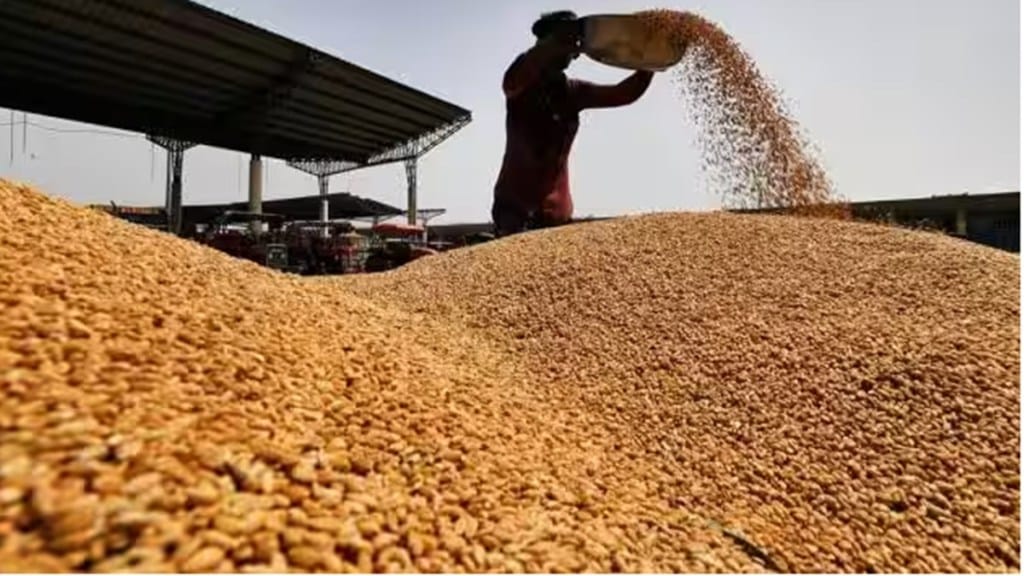Even though the transient vegetable-led spike–which caused India’s Consumer Price Index (CPI)-based inflation to stay above the 6% mark for two consecutive months–may ease from September, high prices of cereals, particularly rice, may continue exerting upward pressure to the headline print in the near term, say experts.
“The start of the Ukraine war (in February 2022) and a series of weather related disturbances led inflation in cereals, first wheat and then rice, to spike,” said Vivek Kumar, economist, QuantEco Research.
“Moreover, the government’s ability to control prices has reduced this year, as the buffer stocks of cereals, in particular rice, is lower compared to last year. Therefore, cereals inflation is likely to remain elevated in the near term,” he said.
Tthe government’s efforts to sell rice through e-auction under the open-market sales scheme (OMSS) have not bore fruit, as traders have shown hesitancy in buying fortified rice – which is mainly distributed under the public distribution system. There are also concerns about the quality of stocks with the FCI.
Data from the Food Corporation of India showed that its total food grains stock in August was 52.3 MT, lower than 54.6 MT in August 2022. The stock of rice was 13% lower on year at 24.3 MT in August.
Since September 2022, the “cereals and products” subgroup–carrying a weight of 9.67% in the overall CPI basket–has remained in double digits. In fact, in August, cereals and products inflation was at an 11-month low of 11.85%, but that was due to the statistical effect of a high base. Sequentially, the index was up 1.4%.
An analysis of the data from the Ministry of Statistics and Programme Implementation shows wheat and rice–represented by items ‘wheat/atta_other sources’ and ‘rice_other sources’–have stayed in double digits over the past several months. The two items together constitute about three-fourth of the cereals and products subgroup.
Even though wheat inflation was slightly fell below 10% in August, and came in at 9.33%, inflation in rice remained elevated at 12.54%. Rice inflation has remained in double digits since October 2022 while wheat inflation stayed above 10% between June 2022 to July 2023.
Rice inflation is expected to stay at elevated levels in the coming months, mainly due to supply crunch as in the current south-west monsoon season, several paddy growing areas have received deficient rainfall. The inflation of the crop may stay high despite government banning export of broken and white rice, and imposing 20% export tariff on the non-basmati and non-parboiled rice.
Mrutyunjay Mohapatra, director general, India Meteorological Department told FE, “rain in key paddy growing areas of eastern Uttar Pradesh, Bihar, West Bengal and Jharkhand is likely to receive deficient rainfall in the current monsoon season.”
“Rainfall deficiency by the end of September (in these regions) is likely to decline to 20–25% against the benchmark from a 50% rainfall deficiency till August,” Mohapatra told FE. So far, cumulative rainfall between June 1 – September 21 has been 7% below the benchmark long-period average (LPA). In September so far, rainfall has been 9% above the LPA.
The FCI has sold 1.8 million tonne (MT) of wheat from its stock in the open market through weekly e-auctions which commenced on June 28 while the corporation could sell only 70,520 tonne of rice since July 5.
To contain cereal prices, the government had announced the sale of 5 MT of wheat and 2.5 MT of rice from the central pool in the open market to bulk buyers in July.
Wheat inflation has remained in double-digits despite record production estimates, and a series of measures announced by the government to tame prices. The government has estimated rice output in the 2022-23 at 135.5 MT and wheat at 112.7 MT.
In the last two years, wheat production has suffered due to heatwaves, creating upward pressures on prices.
As the government’s procurement of wheat in the 2022-23 rabi marketing season dropped significantly to 18.8 MT, down from 43.3 MT in the previous year, export ban on wheat was announced in May 2022. A sudden ban on wheat exports, instead of bringing wheat inflation down, led to greater uncertainty in the market and wheat inflation surged.
In June 2023, for the first time in 15 years, the government imposed wheat stocking limits. “As a result of these stringent measures, wheat inflation plummeted from 25.4% in February to 9.33% in August,” a study by Indian Council for Research on International Economic Relations noted.
“To further decrease prices, India needs to import 5 -6 MT of wheat. To do that, the government needs to abolish import duty on wheat from the current level of 40%,” said Ashok Gulati, agricultural economist and former chairman, Commission for Agicultural Costs and Prices (CACP).
Former Agriculture Secretary Siraj Hussain said that the Agriculture Ministry must reassess the method of arriving at estimates of foodgrains production to avoid supply constraints, echoing the views of Finance Minister Nirmala Sitharaman.
On Wednesday Sitharaman said that there is a need for generating real-time assessments of likely yields for all essential crops, as it helps in policy making.
